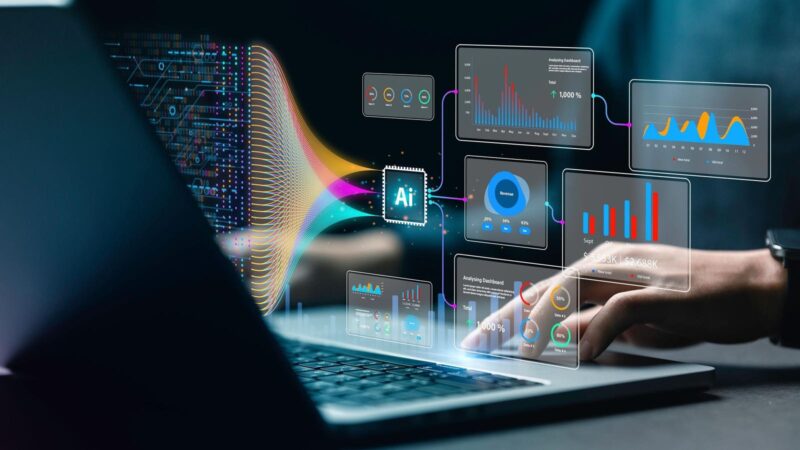The rapid rise of AI agents and foundation models is forcing organizations to completely rethink how they collect, store and use data in 2026.
Adobe Stock
Data is the oil that fuels the AI gold rush; machines need it to understand the world and help us solve its most pressing problems.
But the way we use, collect and store data is evolving as quickly as the AI technology itself. Over the past year, the rapid emergence of agentic AI and powerful foundation models has forced organizations to rethink data strategies. New threats to data security have emerged, and governments worldwide are racing to ensure legislation is robust enough to keep our information secure in this fast-changing new world.
In 2026, data is faster, smarter and more autonomous than ever before. So here are the top trends affecting the way we work with and draw insights from information during 2026.
1. Agent-Ready Data
In 2026, agents will dramatically transform enterprise and everyday life, completing complex tasks, managing end-to-end processes and coordinating with third-party services. However, for them to be effective, data will have to be accessible and in a format they can handle, not siloed away or locked behind legacy architecture. Organizations will also need to carefully implement strategies around accessibility and privacy to ensure they don’t create security risks. For some, this will involve rethinking strategy from the ground up in order to be ready for the agentic revolution.
2. GenAI For Data Engineering
Traditionally, a time-consuming and repetitive step of the analytics pipeline, in 2026, much of this work will be handled by smart algorithms capable of cleaning and formatting data, managing ETL workflows, and implementing security audits autonomously. Data engineers will implement pipelines simply by describing what they want to happen in natural language. The result will be faster insights and less friction between ideas and execution.
3. Data Provenance
With data volumes exploding, data provenance — the ability to know and prove where information has come from, how it’s being used, and how clean it is — is more critical than ever. Traceability, transparency and authenticity are essential elements of enterprise data strategy. This means that tools that log transformations and usage events will become part of the critical trust layer that every organization must have in place in 2026.
4. Compliance And Regulatory Changes
In 2026, a raft of new rules and regulations will come into effect, joining existing legislation such as GDPR that already controls how organizations can access and use information. The EU AI Act, alongside US state-specific laws like the Colorado AI Act and the Texas Responsible AI Governance Act (and several others), takes effect, creating new reporting requirements, obligations around transparency, and penalties for those who break the rules.
5. The Agentic Edge
AI agents won’t just operate in the cloud; they will also be at the edge, operating and interacting with tools and devices closest to where the action happens. Traditional edge computing involves machines, sensors, cameras, or autonomous vehicles, for example, making decisions at the edge. The agentic edge brings agents to the front line, adjusting industrial processes in real-time or negotiating deals and personalizing interactions with customers entirely on-device.
6. Generative Data Democracy
With generative AI on the team, everyone in an organization can effectively become a data scientist. Instead of having to learn dashboards and SQL queries, actionable insights can be gleaned with simple natural-language prompts. This means that for the enterprise, the priority in 2026 is ensuring everyone has the necessary level of data literacy to augment their ability to do their job. They also need to be able to do it safely, however, which means making sure usage policies and guidelines are in place and universally understood.
7. Synthetic Data
Real-world data can be hard, expensive or even dangerous to collect, and can be a privacy nightmare. Particularly when it comes to personal data relevant to valuable uses like healthcare or finance. The solution? Synthetic data — highly realistic but entirely fake data generated by AI algorithms trained to simulate and model the world as closely as possible. Gartner predicts that by 2026, 75% of businesses will be using genAI to create synthetic customer data, putting it among the year’s hottest data trends.
8. Data Sovereignty
Rules on how data can be stored and used change from jurisdiction to jurisdiction. Increasingly, this applies to national borders, as countries and states develop laws and regulations. Geopartitions will be a hot topic in 2026, and enterprises will align infrastructure with the need to work across borders with differing regulatory obligations. Sovereignty also covers organizational ownership, access rights, and the ability to use data with the knowledge that third-party IP rights aren’t being breached. All of these are essential elements of data stewardship in 2026.
The data landscape of 2026 will be fundamentally different from what we know today. Organizations that prepare now for agent-ready infrastructure, embrace generative tools for data work, and establish robust governance frameworks will gain a significant competitive advantage. Those who wait risk being left behind as AI agents become the primary consumers and processors of enterprise data. The question is no longer whether to adapt your data strategy for the agentic era, but how quickly you can make it happen.









